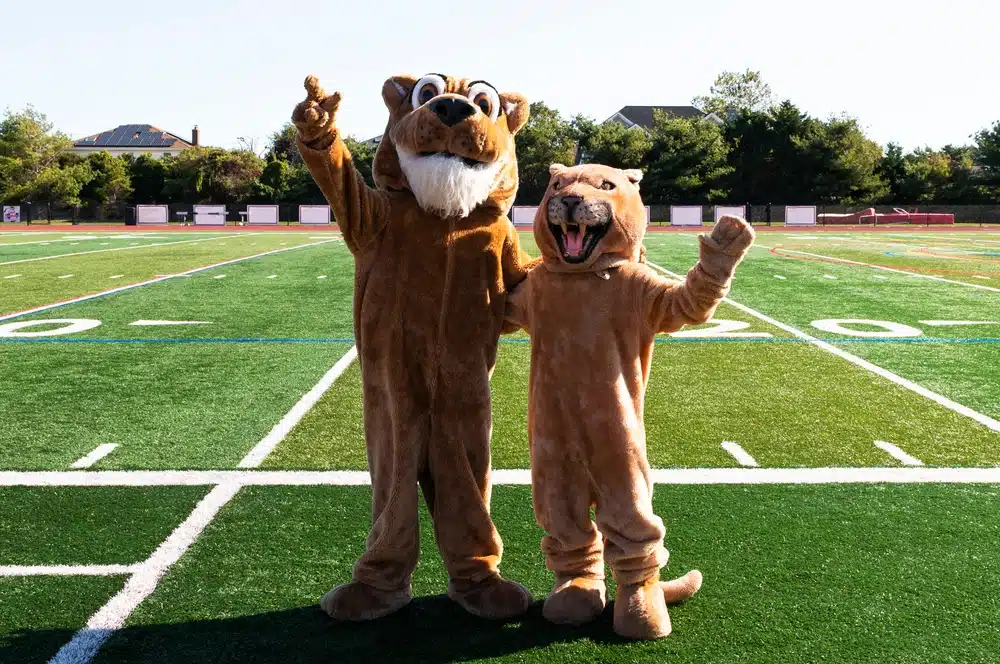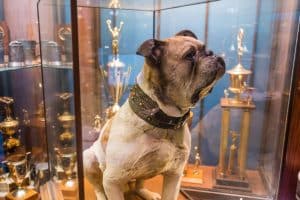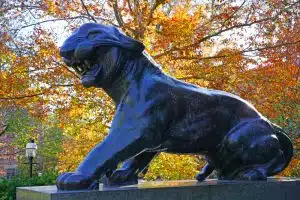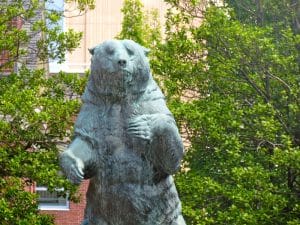The Ivy League School Mascots
What is a college mascot?
What is a college mascots? A college mascot is a symbol or persona that stands in for a college or university. They are typically animals or people. Students, alumni, and supporters of the school’s athletic teams frequently use mascots to foster a sense of school spirit and pride. Read on to discover the Ivy League school mascots.
College mascots might make an appearance at sporting events, parades, and other campus gatherings. They might also be depicted on memorabilia like T-shirts, hats, and other apparel. Mascots can also provide entertainment, which is why numerous college teams have created elaborate routines and shows featuring their mascots.
What are the Ivy League school mascots?
What are the Ivy League school mascots? One of the most cherished traditions in college sports is the mascot. AdmissionSight listed the following Ivy League school mascots:
Yale Mascots: Handsome Dan and Pop Smith
Yale University claims to have the oldest mascot in the nation, making it the first Ivy League institution to do so.
The first Handsome Dan was created in 1889 when Andrews B. Graves, a freshman, paid $5 to buy Handsome Dan I from a blacksmith shop. For ten years, their original mascot watched football games. In Yale’s Payne Whitney Gymnasium’s trophy room, his body is placed inside a closed case.
William “Pop” Smith, another unofficial mascot for Yale, was used. Pop Smith, a devoted Yale supporter in the late 1800s, attended almost all of the school’s sporting events despite not being a recognized mascot.
Princeton’s Mascot, The Tiger
Early affinity for the colors orange and black gave rise to Princeton University‘s mascot. Orange was officially chosen as the class color for the Class of 1869 in honor of William of Orange, prince of the House of Nassau. The official colors of Princeton have been orange and black ever since the 1874 Saratoga Regatta, when teams from Princeton competed in it.
The Princeton football team debuted its uniforms in the 1876 match versus Yale, with black jerseys and tights with an orange “P” on the breast.
The origin of the “Tiger Cheer” shows an early connection to the Tiger. The cheer, which became known as the “Locomotive Princeton” because of its cadence, was supposedly adopted by the Princeton students from a Civil War unit that passed through the area. The cheer was changed to Rah, Rah, Rah, —Tiger, Tiger, Tiger, —Sis, Boom, Bah, Princeton.
It is claimed that the beast was adopted about 1882 because that year saw the founding of the campus humor publication The Tiger. According to a newspaper article, the Nassau Hall guys fought fearlessly.
Some college students brought a live tiger to Princeton in the 1920s and displayed it there during football games. The now-famous tumbling performance was first performed by a student wearing a borrowed outfit just after World War II.
Brown University Mascot: The Brown Bear
The Brown Bear was born on January 20, 1904, when U.S. Senator Theodore Francis Green, a graduate of the class of ’87, introduced him to the institution. Brown University is an Ivy League institution, has the brown bear as one of its school mascots.
The building committee in charge of creating the recreation facility known as the Brown Union included Senator Green as a member. Green wrote in 1923 about his hunt for a mascot that he wanted something living that, although not human, had humanlike features.
The trophy chamber’s grand arch served as the centerpiece of both the building and the room. Senator Green positioned the head of a real Brown Bear displayed on a shield here, over the grand arch, the focal point of student life at Brown.
Columbia University – The Lion
According to Columbia University’s website, George Brokaw Compton CC’1909 introduced a resolution to have the lion as Columbia’s mascot at the College Alumni Association meeting on April 4, 1910. The proposal was approved.
According to Columbia Magazine, Compton recommended that people should start at the top of the food chain. He reportedly said that they possess the king’s crown, “Give us the lion.”
Cornell University: Touchdown The Bear
In about 1915, a black bear club cost $25 to buy. He was Cornell University‘s original mascot, known as Touchdown I, and was given the name Touchdown right away.
Over the years, Touchdown I has been replaced by a number of live bears; however, a cheerleader covered in bearskin has taken the place of a live bear.
Dartmouth College—The Indian
Since almost 200 years ago, the Indian has served as Dartmouth College‘s mascot. This identification is a result of the institution’s early history.
Eleazar Wheelock founded Lebanon, Connecticut’s Moor’s Charity School for Indian children in 1754. Wheelock searched for a location close to the Indian and settled on a location in Hanover, New Hampshire, where he made the decision to turn his school into a college.
Early connections to Indian culture naturally led to a college sports moniker for Dartmouth teams. In 1969, the Indian was officially retired as a mascot, and Keggy the Keg sort of took its place.
Harvard University – John Harvard, The Pilgrim
In the fall of 1638, young Puritan minister John Harvard of Charlestown died, leaving his books and half of his estate to the newly founded college in the Massachusetts Bay Colony.
The General Court honored him by renaming the college in his honor. The Crimson’s mascot is also none other than John Harvard, making it one of the Ivy League school mascots.
University of Pennsylvania – The Quaker
There once was a horse-drawn cart that served as the University of Pennsylvania‘s sole official mascot. This mascot recently returned to popularity, apparently thanks to a school song.
There is a humorous narrative about the cart and horse from three years ago. The horse reportedly bolted and headed straight for the gate as soon as a cannon shot was fired for a score. As they were approaching the gate, the cheerleaders leaped off.
Sports journalists were unable to sway Penn’s mascot selection. The Quaker has never been a possible candidate for a mascot, despite their continuous references to the Penn squad as Quakers.
On rare occasions, a costumed character can be seen pacing the field. Actually, Ben Franklin is supposed to be him. As a result, although the University of Pennsylvania is proud of its moniker, “Red and Blue,” it does not endorse the use of Quakers.
What is the relevance of college mascots?
What is the relevance of college mascots? College mascots play a significant role in the traditions and cultures of numerous universities and colleges. They are pertinent in the following ways, for example:
- School pride: Mascots are frequently employed to foster school pride among students, alumni, and supporters. They give the school and its values a unifying symbol, which can foster a sense of community.
- Marketing and branding: To promote the school and its athletic teams, mascots are frequently used as a marketing and branding tool. They can be used to promote the school and make money by appearing on apparel like T-shirts, hats, and other memorabilia.
- Entertainment: Mascots can provide entertainment and amusement, particularly at sporting events. Fans enjoy the elaborate routines and performances that several college mascots have created.
- Tradition: Many college mascots have an illustrious past and play a significant role in the school’s customs. They can give a sense of continuity and stability to the school’s history and to present students and alumni.
In general, college mascots are an important part of the identity and culture of many universities and colleges. They serve as symbols of the school’s beliefs, traditions, and goals.
Getting to know the Ivy League school mascots must have made you think that even institutions are not just about getting good grades but also valuing school pride and tradition. Want to attend one?
With AdmissionSight, our college admission experts will provide the necessary guidance every step of the way. You can get assistance to make sure you get into the college of your choice.
In order to help you plan your entire college career and make sure you get accepted to the college of your choice, AdmissionSight will evaluate your academic and extracurricular profile and give you a roadmap.
We will also be able to help you maintain your academic direction and competence so that you won’t simply rely on athletic scholarships.
AdmissionSight is the world’s leading Ivy League and college admission consulting company. You may obtain all the necessary advice from the team by making an appointment. Book your consultation today!







































